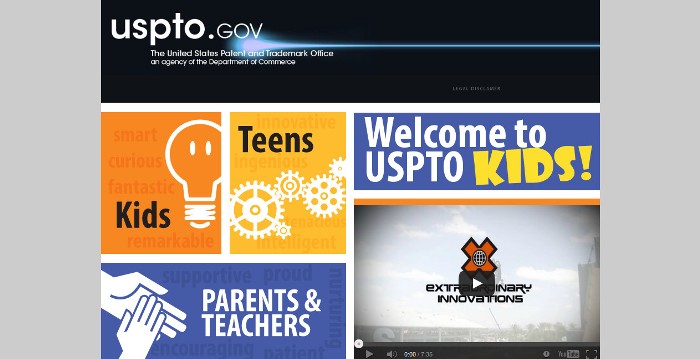Be Inspired: Useful and Impressive Inventions by Kids and Teens
The United States Patent and Trademark Office (USPTO) recently announced the launch of their overhauled USPTO Kids site to make it more useful and encouraging for young inventors and technology enthusiasts. It aims to encourage students of all ages to invent while learning the importance of the creation and protection of intellectual property.
To support USPTO’s efforts in promoting invention among young people, we present some of the most impressive inventions by kids and teens below:
1. Hot Seat by Alissa Chavez
The creatively and aptly named “Hot Seat” by incoming senior high school student Alissa Chavez is a patented invention created to save lives from detecting overheating in their baby’s chair in the car. It rings an alarm upon detecting dangerous heat levels, alerting a babysitter or parent some 40 feet away from the car. Chavez is currently raising funds through crowdfunding for production and commercialization.
2. Hollow Flashlight by Ann Makosinski
Sixteen-year-old Ann Makosinski learned about her Filipino friend’s ordeal in being unable to do well at school because she can’t study properly, because of lighting problems. To help her friend, she came up with the idea of creating a headlight that did not require traditional charging. The result: a body heat powered flashlight she called the “Hollow Flashlight.” Her invention earned her a 2013 Google Science Fair award.
3. A Driver’s Companion by Katherine Wu
A Driver’s Companion is a head-worn device developed by a 13-year-old from North Potomac, Maryland. This teenager is Katherine Wu, a young inventor inspired by her mother’s thoughtful words to her father on safe driving, specifically on being careful not to fall asleep while driving. The device Wu invented is a small wearable item that monitors brain waves to detect drowsiness. If a driver begins falling asleep, the device emits sound and light alerts.
4. Natural Track Lighting by Nikita Rafikov
In Evans, Georgia, 11-year-old Nikita Rafikov thought of using green fluorescent protein (GFP) for home track lighting. GFP is a naturally-occurring substance found in some species of jellyfish. In her photo posted on Discovery Education, Rafikov presented her invention emitting light that is prominently purplish with some tinges of shades of blue and green.
5. PolluCell by Sahil Doshi
Invented by 14-year-old Sahil Doshi from Pittsburgh, PolluCell is a battery created using carbon dioxide and other greenhouse gases. It is deemed as a low-cost energy alternative for developing countries. PolluCell is not related to organic battery created by Japanese scientists we reported previously, but the principles behind its operation could have some points of similarity.
![By Nuno Pinheiro , David Vignoni , David Miller , Johann Ollivier Lapeyre , Kenneth Wimer , Riccardo Iaconelli (KDE) [see page for license], via Wikimedia Commons](https://techtheday.com/wp-content/uploads/2014/04/battery-charging.png)
By Nuno Pinheiro , David Vignoni , David Miller , Johann Ollivier Lapeyre , Kenneth Wimer , Riccardo Iaconelli (KDE) [see page for license], via Wikimedia Commons
6. Chemotherapy Bag by Kylie Simonds
A cancer patient tries to cope with her disease by inventing her own chemotherapy bag. Isn’t this story inspiring? Yes, Kylie Simonds of Naugatuck, Connecticut developed a chemotherapy bag to address the difficulties she encountered as a cancer patient when she was younger. Mobility was made very challenging by her I-V pole wires and the heavy I-V pole itself. Her solution is a chemotherapy bag designed as a pediatric IV backpack with colorful and fun designs. The invention won Simonds a prize at the Connecticut Invention Convention this year. She has now obtained a patent for the invention and is currently raising money for its commercialization.
7. Coin-Sized Sensor for Persons with Dementia by Kenneth Shinozuka
In an attempt to help his family in caring for his dementia-afflicted grandfather, fifteen-year-old Kenneth Shinozuka developed a wearable sensor that can be attached to a person’s feet. This sensor connects to a smartphone to present the alerts. It gauges pressure when the wearer stands up and alerts a caregiver or family members that the wearer will possibly be wandering about. Shinozuka received a $50,000 for the invention after being granted the Scientific American Science in Action Award.
8. Pancreatic Cancer Detection Tool by Jack Andraka
A fifteen-year-old high school freshman, Jack Andraka won the grand prize at the Intel International Science Fair along with a $100,000 prize money for his invention that detects pancreatic cancer. The invention started with a revelation that shocked the young boy—that there is currently no method to detect pancreatic cancer in its early stages. Upon learning about this fact, he did his research, hoping to find details that he can work on to devise something that can detect the emergence of pancreatic cancer. Finally, he found the knowledge he needed in one article about pancreatic cancer so he wasted no time to contact ontological laboratories and researchers to be able to test his ideas. The final product (invention) is a paper strip coated with a carbon substance that attracts mesothelin that will be placed in an apparatus Jack built in his parents’ garage.
![By XPRIZE Foundation (Flickr: Visioneering 2013) [CC-BY-2.0 (http://creativecommons.org/licenses/by/2.0)], via Wikimedia Commons](https://techtheday.com/wp-content/uploads/2014/09/Jack-Andraka.jpg)
Jack Andraka – Image By XPRIZE Foundation (Flickr: Visioneering 2013) [CC-BY-2.0 (http://creativecommons.org/licenses/by/2.0)], via Wikimedia Commons
It’s certainly inspiring to see how the young people of today are not just constraining their technical knowhow and potentials to “gaming rigs,” smartphones, and the Internet. The world needs more scientists and technologists and it’s always better if people learn and love science and technology while they’re young and bold enough to do anything and everything to test their ideas.
